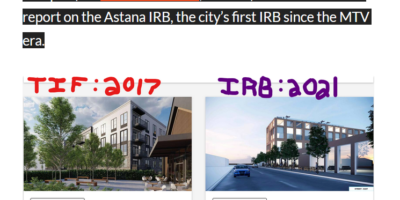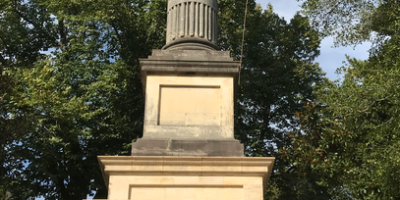Mighty Wurlitzer also a part of KY Theatre experience
After reading Colleen Glenn’s informative article (“Kentucky Theatre Summer Classic Movies Series returns May 26,” May 19) about nearly all aspects of the 2010 Kentucky Theatre’s Summer Series—including the anticipation of the series, assemblage of the movies, people involved, Flash Gordon Series, and a synopsis of each feature film—were covered. However, there was no mention of one very essential item which is experienced before each matinee and evening feature picture, and has been a part of the Classic Series Film Series since 2001!
Kentucky’s Mighty Wurlitzer-Theatre Organ Project, Inc continues each Series with pre-show mini-concerts on the 2-Manual Conn Theatre Organ (a 1959 tube model), which recreates the movie patron’s experience of the “Golden Age of the movie palace,” and at no cost to the Kentucky Theatre Group, Inc or movie patrons.
These pre-show mini-concerts foreshadow the return of the 3/18 Mighty Wurlitzer to its original venue, the historic Kentucky Theatre. Nowhere in the Commonwealth of Kentucky can a movie patron have this Kentucky Theatre Summer Classic Series theatre organ experience; albeit electronically, until the Wurlitzer returns home.
Want more information? Visit our website www.kywurlitzer.com for detailed information about this special project for Lexington and the Commonwealth of Kentucky.
Thanks,
H. Steven Brown, President
Kentucky’s Mighty Wurlitzer-Theatre Organ Project, Inc.
Aesthetics do matter
The core of Andrew Battista’s article “The downtown brand wars” (May 19) seems to be a critique over priorities, specifically the concern shown for aesthetics by ProgressLex while the near-downtown poor lack “the amenities that most people in Lexington would deem essential.” Battista points out the deep poverty in nearby wards, populated by many without cars who need a near-by drugstore, suburban box or not. Those poor also suffer from absentee landlords who let their houses crumble, not an aesthetic sight—except, as Battista notes, that Thoroughbred Park blocks the view. The poor, generally, are unaesthetic. Better to keep them out of sight.
And yet, for all these good points, I think Battista sets up a false dichotomy. The drugstore is going to be built and how it looks, how it fits into the “design” of downtown is important. Battista sneers at what he perceives as an elitist sneer directed towards suburban vulgarity. But that vulgarity is real and not just a question of taste. The sameness, the corporate strip-mall, has killed the feeling of uniqueness in many cities and towns across America. I wonder if Battista thinks the poor are not interested in aesthetics. They might not discuss its fine points over wine and cheese, but I believe they are. Generations of architects have thought design was only for the rich and given us housing projects that would kill anyone’s spirit. Poor design is not just aesthetics: it says you’re not worth much. It says if you have an identity, it’s not a concern of ours.
Of course Battista thinks we should better spend our limited energy on other fights, and maybe he’s right. But picking a fight with other progressives is not a good use of energy, either. I wish ProgressLex well in their struggle with CVS. An inviting, pleasing design welcoming us to the core of downtown won’t recreate Hutchinson’s, but it might say we’re not Anyplace, U.S.A—we’re Lexington. That Lexington should not, as Battista details, be all horsey upper-crust. That also excludes. But a downtown drugstore can be of a design that exudes some atmosphere of respect towards the town and its patrons, some acknowledgment that we are a different place, a place with its own identity. Everyone, poor and rich, will notice such a design. It will make us all feel better.
Joe Anthony
Andrew responds:
I do appreciate the feedback I have received from Joe Anthony and other readers, but I also resent the suggestion that picking a fight with other progressives is a waste of energy (members of ProgressLex have also accused me of wasting energy). I wrote the article because I want to see Lexington move closer toward an egalitarian downtown. ProgressLex is not exempt from critique just because it bills itself as progressive, or because it sees itself as fighting the good fight against vulgar corporations. Even though ProgressLex means well, I earnestly question how progressive their campaign against CVS—or their general lobbying for urban design standards for downtown—really is. I perceive ProgressLex as an enclave of Lexington’s privileged class—designers, craftspeople, architects, tenured academics—who wax nostalgic for fashionable neighborhoods and seek to preserve what are essentially background stage props, necessary to create a fantastical, authentic, and “enriching” urban experience for them to enjoy.
No one in this discussion so far has taken the time to articulate how architectural aesthetics actually improve the lives of people, or why their ideal of an urban design model (whatever that is, anyway) is actually more socially equitable than other models, like stucco and boxes. Meanwhile, multiple arguments can be made that the specific features ProgressLex demands (two stories, rustic brick façades, large windows, wrought iron fencing) collectively reinforce division between a privileged space for upper-middle class, mostly white citizens and an underprivileged space for lower-class, mostly minority citizens, who have to live with the aesthetic blight of liquor stores with caged windows, abandoned shoe repair shops, and a Family Dollar that illuminates the corner of a residential block during evening hours.
And I do think that poor people care about aesthetics. However, I can say that from my conversations with East End neighbors that there are far more people happy that the new Equestrian View subdivision expansion has produced, safe, environmentally-friendly, and affordable downtown housing then there are people angry that these houses look like the same drab suburban plots you’d find in Masterson Station, Hamburg, or other exurban divisions.
I would like to see this discussion to continue to develop and explore what a just and inclusive urban design model might look like.




Leave a Reply